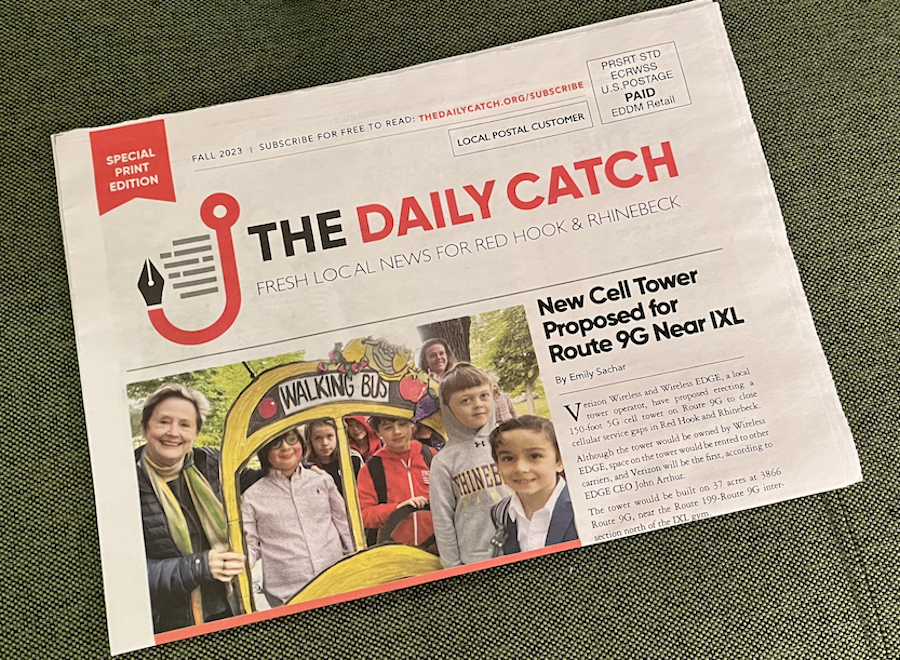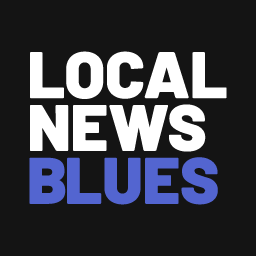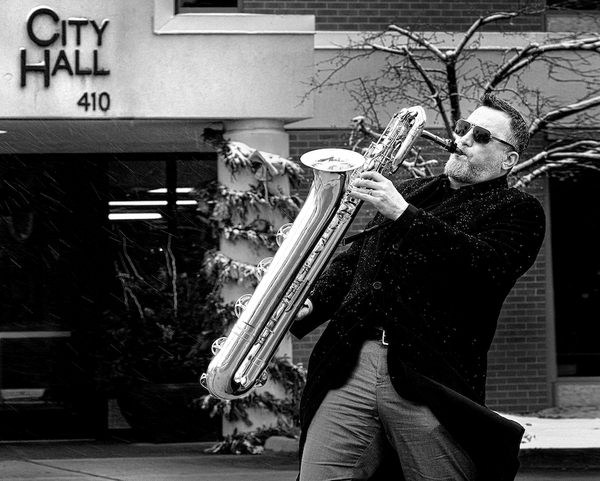Ground Offensives
Use the local force, Luke.

By Alice Dreger
In a January post for Local News Blues ("What Ezra Klein Got Wrong Today"), I noted that smaller local news producers have opportunities big news organizations like the New York Times never will. Today I want to remind you of one:
You’re local.
I don’t just mean that you’re bringing vital news about where your readers actually spend their days – though that is an advantage. I mean that you have an ability to launch ground offensives that can be highly effective for the money.
I get that your outlet may be “all digital.” But even if it is – or perhaps especially if it is – you should seriously consider launching paper-based ground campaigns to reach people who don’t know about your operation, to get them subscribed, and to get them to send you money.
I’m going to run through several specific ideas in this post, but I want to emphasize one thing: The QR code is your best friend.
Thanks to the pandemic, even people old enough to win their party’s nominations for the presidency know how to point their phone cameras at a QR code and open a link. So:
- Start by creating a “Hello there, neighbor!” static page (www.yourop.news/hello) that tells people very briefly who you are and what you do and encourages them to give you their email address. Or, even better, make a decision to have a QR code that goes straight to your newsletter signup page.
- Then, generate a QR code for that page. I recommend using Adobe’s free service.
- Download and test the QR code to make sure it works correctly.
- Next, do everything to get that QR code out into the world. Print the QR code on the backs of your team’s business cards. Have a designer create an eye-popping postcard with the code to mail out or drop around town. (Local mailing houses typically have lists you can easily access.) Better yet, have a designer create a compelling doorknob hanger for you and then recruit people who love to get 10,000 steps per day to hang them around town for you.
If you think great design of a postcard, doorknob hanger, or the like will cost you a fortune, allow me to recommend Cait Palmiter, the designer who has done fantastic work for East Lansing Info (the operation I founded), Prison Journalism Project, PublicSource of Pittsburgh, and other small-staff news outlets. Cait’s rates are highly affordable and she knows how to submit an order to your printer to get the job done correctly.
Next, I’m going to suggest something that will make a lot of your reel backwards, but stay with me: Consider putting out a paper edition. I’m not talking about a regularly-printed paper edition, like once a week. I’m suggesting doing this just once or twice per year.
In 2012, I created East Lansing Info (ELi) as an all-digital operation for the same reason many of your outlets are all-digital. It’s cheaper, it’s easier, it’s nimble, and we didn’t have to know anything about typesetting or printing.
But at INN Days years ago, I ran into someone who was handing out copies of her outlet’s once-yearly paper edition. It came with a slick donation envelope inside and she swore up and down to me that this paper edition was a game-changer for them in terms of expanding reach and obtaining donations. So, I decided we would try it.
Wow.
After we dropped the first paper edition all over town – coffee shops, city hall, banks, the public library, public meetings – and we mailed it out to a targeted list, we did indeed see an immediate growth of readership and newsletter signups.
But we also saw a huge influx of donations via the enclosed envelopes. (Cait can easily and inexpensively adapt that ELi envelope for you, including if you're for-profit.) We calculated that the first year-end edition brought in $25,000-$30,000 more than it cost us to produce and mail. (Your results may vary; we used a high-yield list of “active voters” and hit hard on our independent, vital, local political reporting.)
But what really blew me away was how the paper edition changed the perception of our work. Suddenly we were taken much more seriously as “the newspaper in town.” The local NPR station wanted to work with us. Another local radio station offered to host a weekly podcast by our reporters. Our local university’s Archives department decided to catalog what we were doing.
There’s no doubt that part of why it worked so well in boosting our reputation was because – necessarily, given the production lag time – we had to pick the “best of” articles that were not terribly time-sensitive. That meant the paper editions showed off our best work.
The last paper edition I worked up for ELi before retiring was for the 2023 year-end campaign. For that one, with Cait’s design help, I created a special centerfold timeline showing off the year’s reporting to date, all linking via a QR code to a page where people could easily access the individual reports. It worked like a charm to remind our readers just how much news ELi delivered in ten months.
The basic layout design Cait created for ELi’s paper editions is easily adaptable to your outlet. In fact, after having worked with several small news operations, Cait has now created a step-by-step guide that walks you through exactly what she’ll need from you to create a paper edition. For example, it explains that you need to point her to your masthead, and then it tells you that she’ll need your logo, an approximately 800-word article for this space, a 500-word article for that space, and so on. It’s basically plug-and-play and looks fantastic.
Needless to say, ground campaigns can also include local events hosted or co-hosted by your team, but I’ll warn you: events are incredibly labor-intensive in many cases, and they don’t tend to draw a lot of people unless there is something really extraordinary going on in your locale and you can tap into that. Events often lose money, though they do create goodwill. It’s more about “friendraising” than “fundraising.”
Before I wrap up for today, let me just add that, even if you decide to never touch paper, don’t be afraid to be shameless with QR codes. For example:
- If you’re attending public meetings on Zoom but not turning your video on, instead of having your photo or logo (or a black screen) sit up in place of your live image, stick up a QR code that people can use to find your homepage.
- Keep a key QR code handy in your phone’s photo stash so you can offer it to prospects when out in the field.
- Print t-shirts with your logo on the front and your QR code on the back. Maybe put some compelling words above the QR code, like “Know what happened TODAY in Porterville?”
- Print out a QR code that goes to your reporting page and stick it on your laptop cover so when people see you out at meetings and coffee shops, they can figure out who that person they keep seeing is. Mark the QR code with the words, “I’m that reporter.”
Whenever using QR codes, remember that you want to keep the user’s experience as fast and seamless as possible. Don’t make the potential contact go through lots of pages to travel to where you want them to be.
If you want them to zip to your subscription page, have the code go straight to that. If you want them to send you money, have the code take them straight to the simplest interface possible for that. (Check out Stripe’s option.) If you are at a meeting where you’re hoping those present might send you tips, have your Zoom image QR code go straight to your “how to send us tips” page.
You are never going to reach millions of people. That’s okay! That’s not your mission. Having a smaller, finite number of people you need to reach – remember, that’s your advantage. And the fact that they’re nearby, haunting the same places as you? Use that.
Find Local News Blue’s “hacks” page here. Have a hack you want to share? Let us know.
Alice Dreger is a journalist, historian, and the publisher of Local News Blues. She founded East Lansing Info, a nonprofit digital investigative news service, and ran the operation for about ten years. Read more at the Local News Blues contributors page.





